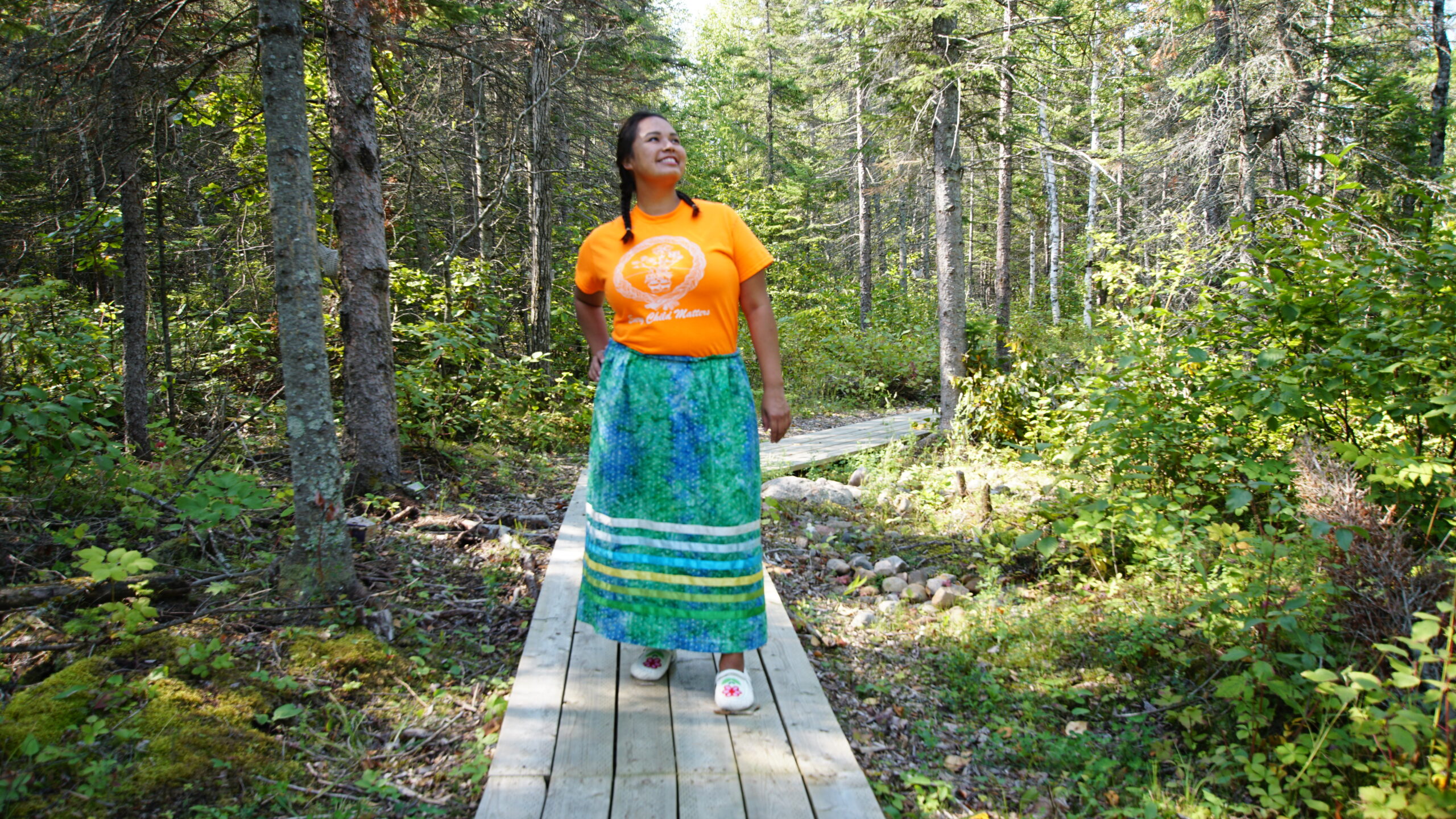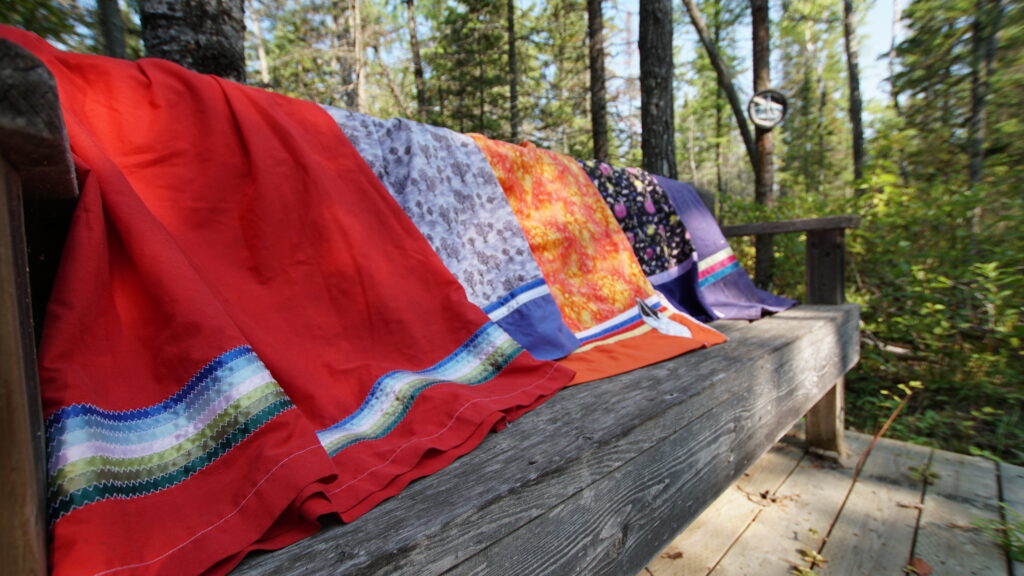Ribbon Skirt Reflections

Jewel Pierre-Roscelli
My first ribbon skirt was given to me by my kunshi (Dakota for grandmother). The only times that I went to powwow or ceremony while growing up was with her, so she gave me a skirt to wear. Since I didn’t grow up close to our traditions and culture, I would always forget about my skirt and wear something else. As a child and into my early 20s, I held a lot of shame with being Indigenous and didn’t tell people, or admit, that I was Dakota.
With the persistence of my kunshi asking, “Where is your skirt, my girl?” I eventually started to remember it. She also gifted me with more skirts throughout the years and as I unlearned the shame of my culture, I started to feel pride in my identity and remembered them more when I attended cultural events.
I feel so proud now when I wear my ribbon skirts. I am proud to be Dakota and I am proud to wear these beautiful gifts from my kunshi.
I’ve noticed that within the last few years, there has been a shift in Indigenous pride. I’ve seen many people reclaiming traditions and skills that were close to being lost, such as beading, sewing blankets, and sewing ribbon skirts. It’s a beautiful thing to witness this resurrection of culture.
I think it’s important to have National Ribbon Skirt Day because it’s a reminder for us to be proud of our culture and identities. When I heard the story of how young Isabella Kulak was shamed for wearing her ribbon skirt on formal dress day, I was angry. It goes back to that shame that I know a lot of Indigenous people have felt at some point. In my healing journey, I was angered that another young Indigenous person had to feel the shame that I carried for so long. I know that it doesn’t have to be that way.
Wearing my skirt on National Ribbon Skirt Day helps me to feel proud to be Dakota and helps me feel strong to stand with Isabella Kulak and our cousins across Turtle Island.
Winona Young
My first ribbon skirt was a blue skirt with black bears around the bottom. My skirt came from an Indigenous women’s organization I worked for. An Elder from The Pas who had made them came to the office and handed them directly to each one of us. We did not pick which one we wanted, it was as if the skirt she had handed to each one of us was meant for the woman she handed it to.
When I wear my ribbon skirt I feel pride and strength. Ribbon Skirt Day is important to give Indigenous women a reminder of who we are, our strength as Indigenous women, and the connection that we have with one another.
Allyssa Shrupka
My first ribbon skirt was gifted to me by a friend on the first-ever National Day for Truth and Reconciliation. That friend happens to be my colleague, Jewel! At the time, I was working for an Indigenous-led non-profit organization, and I was in charge of planning the day’s event. I felt proud to reclaim my identity and get back to my roots through working with the organization, because as a child, I grew up estranged from my background and did not start learning about my culture until my adulthood. When the event date came, I had not received any regalia to tie my clothing into my newly embraced, no longer suppressed Indigeneity. I was gifted a beautiful blue ribbon skirt from Jewel, which allowed me to represent and connect fully with my roots.
Owning and wearing a ribbon skirt brings power to my soul by reclaiming a lost identity. I no longer feel shame, embarrassment or confusion when talking about my background, I feel pride. It’s an important part of who I am as a person. Connecting and learning with others in the community, coming together, and sharing stories like why Ribbon Skirt Day happens is a vital part in continuing learning and spreading knowledge and acceptance among Indigenous and non-Indigenous communities.

